#Game Engine Architecture
Explore tagged Tumblr posts
Text
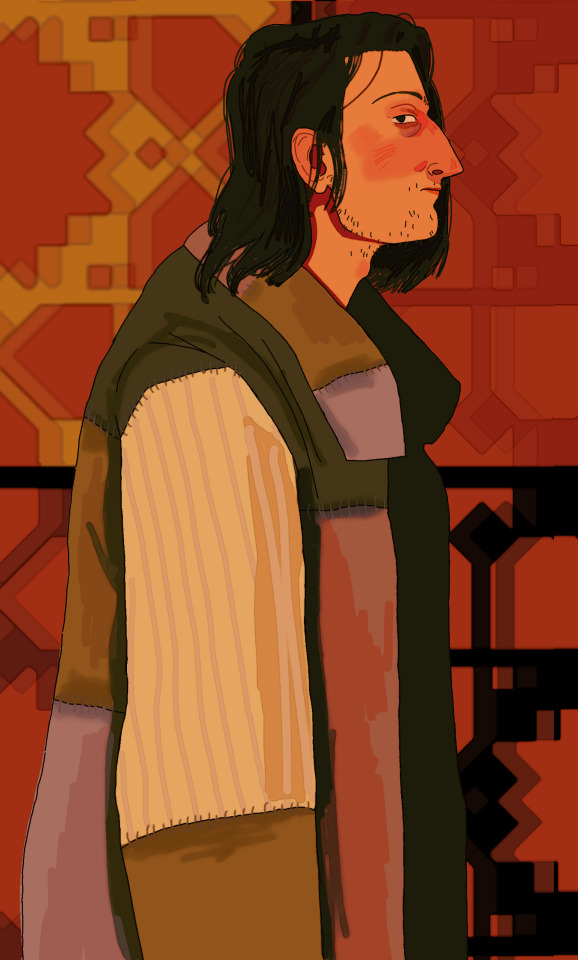
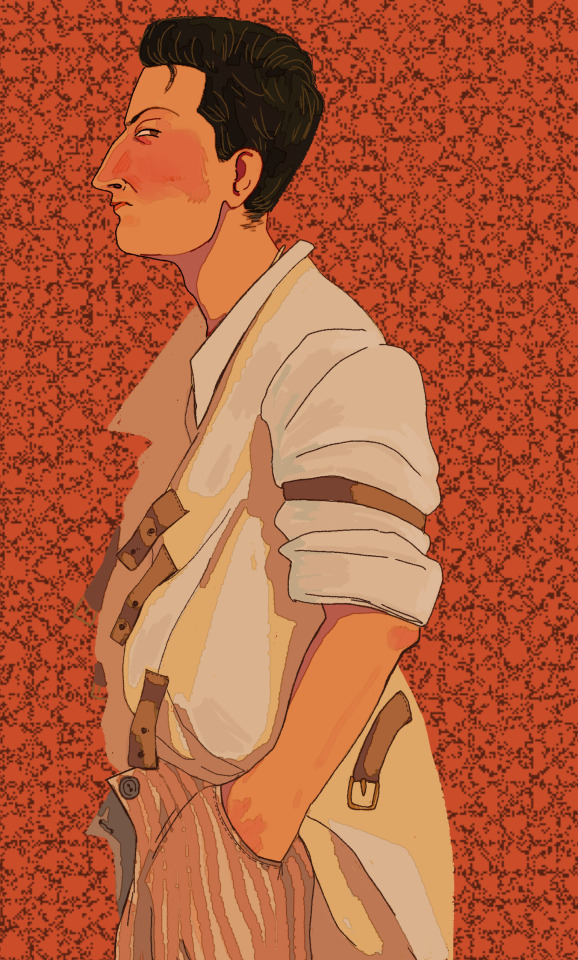
exclusively between the hours of 1 and four
#rare digital art brought to you once again by ibis paint and my finger.#pathologic#art#peter stamatin#andrey stamatin#i made these like a month apart with completely different brushes and you can kind of tell#theyre getting as good a use out of their degrees as i probably will.#ie the architectural engineering being applied absolutely nowhere and making ends meet as a barkeep and#in his own words#the trailing shadow of an architect#anyways im always glad to chat with them when the game affords me the chance#we arent ever on the same wavelength but sometimes the lines converge
344 notes
·
View notes
Photo






John T. A. Haddock
Mid Environment Artist
artstation
More from «Artstation» here
#Game Art#noai#lighting#game art#red dead redemption#cottage#Props#house#john_haddock#artstation#environment#Art Blast#John T. A. Haddock#atmosphere#digital 3d art#drawing#Games and Real-Time 3D Environment Art#art#game environment#artist#unreal engine#Lighting#architecture#medieval#River House
15 notes
·
View notes
Text
What are you guys' headcanons for what the foxes' majors would be? (as in alternative majors that you think they would take, not their canon ones)
#I'm actually just curious#personally I'm an english lit andrew truther tho I can also see him doing law#aaron seems like a civil engineering type of guy or pharmaceutical science maybe#I'd say physics for neil#history suits kevin too well so idk but perhaps archeology????#social work for renee? or maybe anthropology#wait actually neil also fits linguistics#I genuinely think allison would major in art history or architecture#dan: education#matt: geology (don't ask why)#nicky: philosophy or communications#I forgot katelyn#anyway I think she would do forensics tbh#aftg#all for the game
20 notes
·
View notes
Text
[gamedev:part 7]
Finished another house asset. I think I will do one more for the scene next week. This house is a mixture of architectural styles I came across. The entrance with the glass blocks is something that I can’t pin down timewise. It seems to be incorporated for a long time, till the early 2000’s. I saw some entrances where they were used to create these curved almost pillar-like shapes. They can look a bit antiquated — especially with these roofs infront. But overall I think they are lovely. Here are some examples of glass block architecture.
The overall shape of the building I can’t tell when it was be built. I see these general shapes of buildings a lot in Cologne. They probably originated in the 50–60’s. But even 90’s housing here seem to conform to this general blocky shape with triangle roofs.
The light colored outer frame on the windows is something I think is more recent on the other hand. I saw several houses that got renovated were they added these color touches. Probably the closest thing we get right now to ornamentation (!^_^)
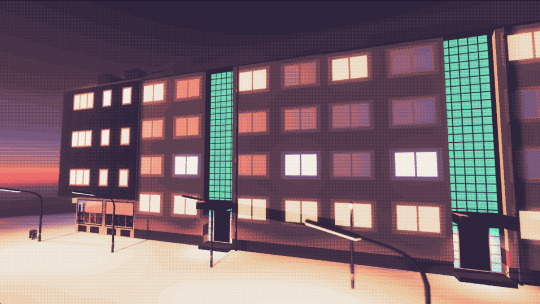
#godot engine#gamedev#indiedev#visual novel#3d game development#screenshot sunday#blender3d#low poly#architectural musings
3 notes
·
View notes
Text








Landmarks for Sherlock Holmes: Chapter One by Yura Ponomarenko
#sherlock holmes#frogwares#sherlock holmes: chapter one#yura ponomarenko#concept art#video game art#landmarks#unreal engine#3d model#architecture#frogwares holmes
16 notes
·
View notes
Text
On the topic of playgrounds... These are playgrounds in the 1900s.

[x]

[x]

[x]
#playgrounds#1900#1900s#play#children#games#swings#slides#ladders#bars#friends#playing#history#architecture#engineering
10 notes
·
View notes
Text
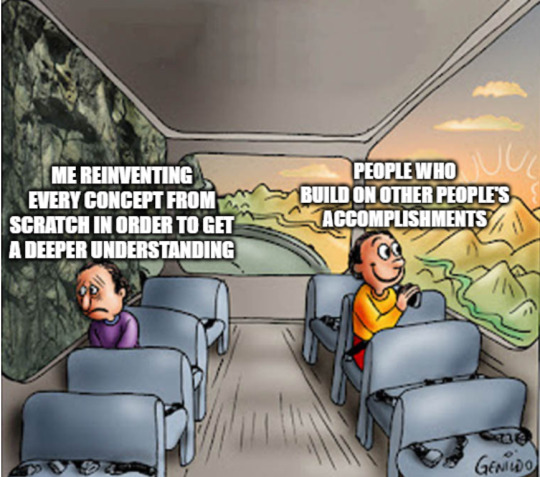
credit @lusi-1
#nerding#memes#studying#nerd#architecture#engineering#software#development#game dev#funny haha#we do a little trolling#me fr
2 notes
·
View notes
Text
DM-1on1-Idoma is such a lovely and peaceful map! I love all the wooden structures and plants and pretty sounds. :)
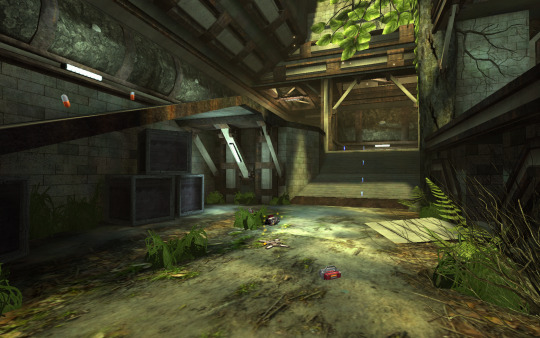
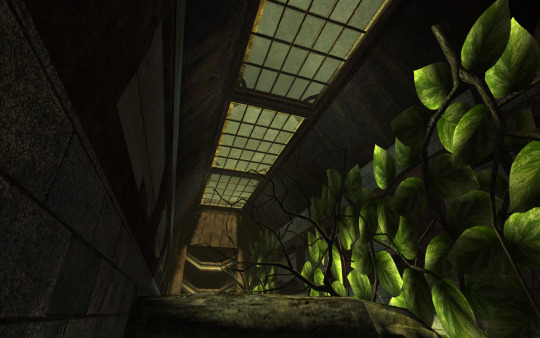
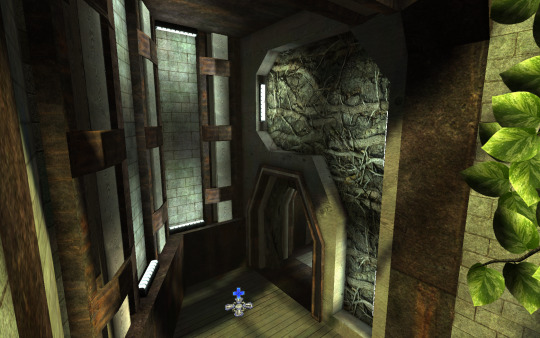
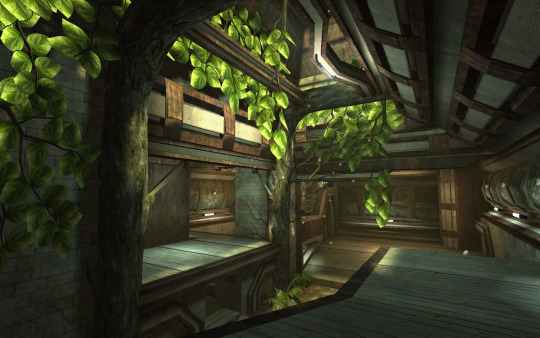

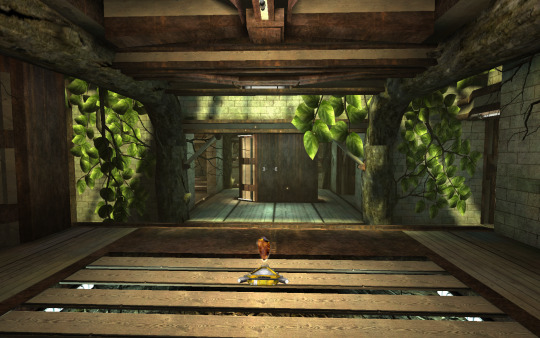
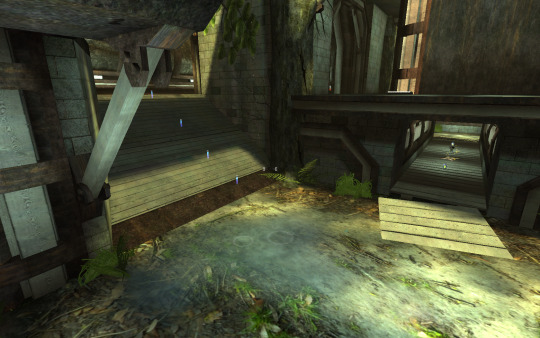

#ut2004 art project#dm-1on1-idoma#idoma#deathmatch#nature#wood#pretty#peaceful#architecture#video game scenery#level design#video game art#ut2004#unreal engine#unreal engine 2#unreal tournament 2004#unreal tournament
1 note
·
View note
Text
Top 5 Careers You Can Pursue After Learning 3ds Max

1. 3D Visualization Artist
Role & Responsibilities:
A 3D Visualization Artist creates photorealistic renders of architectural designs, interiors, and products using 3ds Max. These artists work with architects, real estate developers, and interior designers to bring their concepts to life.
Industries Hiring 3D Visualization Artists:
Architecture & Interior Design
Real Estate & Property Development
Advertising & Marketing Agencies
Skills Required:
Strong command of 3ds Max and rendering engines like V-Ray or Corona
Attention to detail for realistic lighting and texturing
Basic knowledge of Photoshop for post-processing
Salary Expectations:
In India, a 3D visualization artist can earn between ₹4,00,000 to ₹12,00,000 per year, depending on experience and expertise.
2. Architectural Designer & Modeler
Role & Responsibilities:
Architectural designers and modelers use 3ds Max to create detailed 3D representations of building projects. They help architects visualize their concepts and refine their designs before construction.
Industries Hiring Architectural Designers:
Architectural Firms
Construction & Engineering Companies
Urban Planning Departments
Skills Required:
Proficiency in 3ds Max and AutoCAD
Understanding of architectural blueprints
Ability to create 3D walkthroughs and animations
Salary Expectations:
The average salary for an architectural modeler in India ranges from ₹5,00,000 to ₹15,00,000 per year.
3. 3D Animator & Motion Graphics Artist
Role & Responsibilities:
A 3D Animator uses 3ds Max to create animations for movies, advertisements, video games, and virtual reality (VR) projects. Motion graphics artists design engaging visual effects for media content.
Industries Hiring 3D Animators:
Film & Television Production
Video Game Development
Advertising Agencies
Skills Required:
Expertise in 3ds Max animation tools
Knowledge of rigging and character animation
Experience with software like After Effects and Maya
Salary Expectations:
A skilled 3D animator can earn between ₹6,00,000 to ₹20,00,000 per year in India, depending on the industry and expertise level.
4. Product & Industrial Designer
Role & Responsibilities:
Product designers create realistic 3D models of consumer products, furniture, and machinery. They use 3ds Max for product visualization, prototyping, and design refinement before manufacturing.
Industries Hiring Product Designers:
Automotive Industry
Consumer Electronics & Furniture Manufacturing
Fashion & Jewelry Design
Skills Required:
Advanced modeling and texturing in 3ds Max
Understanding of material physics and product ergonomics
Experience in CAD software like SolidWorks or Fusion 360
Salary Expectations:
Product designers earn between ₹5,00,000 to ₹18,00,000 per year, depending on the industry.
5. Gaming & Virtual Reality (VR) Designer
Role & Responsibilities:
Gaming and VR designers create 3D models of characters, environments, and objects for immersive digital experiences. 3ds Max is widely used in game development for asset creation and animation.
Industries Hiring Gaming & VR Designers:
Video Game Companies
Augmentd Reality (AR) & Virtual Reality (VR) Startups
Metaverse & Digital Experience Firms
Skills Required:
Advanced 3D modeling and texturing in 3ds Max
Experience with game engines like Unity and Unreal Engine
Understanding of rigging and physics simulation
Salary Expectations:
Gaming and VR designers can earn ₹6,00,000 to ₹25,00,000 per year, with international opportunities in game development companies.
Why Enroll in a 3ds Max Course in Hyderabad?
If you are looking to build a career in 3D design, animation, or visualization, enrolling in a 3ds Max course in Hyderabad can be your first step toward success. Hyderabad is home to a growing tech and design industry, offering excellent job opportunities for 3D artists.
What You Will Learn in a 3ds Max Course?
Modeling & Texturing: Creating 3D objects with realistic textures
Rendering Techniques: Using V-Ray & Corona for high-quality renders
Animation & Motion Graphics: Developing smooth and dynamic animations
Industry-Based Projects: Hands-on experience with real-world projects
Who Should Join This Course?
Architecture & Interior Design Students
Game Developers & Animators
Product Designers & Marketing Professionals
Conclusion
Learning 3ds Max opens up exciting career paths in industries such as architecture, animation, gaming, and product design. By enrolling in a 3ds Max course in Hyderabad, you can gain the skills needed to secure high-paying jobs and work on creative projects worldwide. Start your journey today and unlock endless possibilities in the world of 3D design!
#mechanical engineering#3dmodeling#bim and autodesk revit#architecture#academic#3dsMaxCourseInHyderabad#3DModeling#Architecture#Gaming#Animation#InteriorDesign#CareerIn3D#ProductDesign#VR#Autodesk3dsMax
1 note
·
View note
Text

as seen on gran turismo
1 note
·
View note
Text
In recent years, immersive technologies like Virtual Reality (VR), Augmented Reality (AR), and Mixed Reality (MR) have gained massive attention, reshaping industries and changing the way we interact with the world around us. From gaming to education, healthcare, manufacturing, and retail, these technologies are driving innovation. If you’re looking to explore these technologies, Simulanis stands out as a leader in this space, offering cutting-edge solutions to businesses across various sectors. Let's dive into how Simulanis, a Virtual Reality Development Company in India, Augmented Reality Development Company in India, and Mixed Reality Development Company in India, is at the forefront of this technological revolution.
#Mixed Reality vs Virtual Reality vs Augmented Reality#Virtual Reality vs Augmented Reality vs Mixed Reality#VR vs AR vs MR#Mixed Reality vs Virtual Reality for Gaming#Mixed Reality vs Virtual Reality vs Augmented Reality in Education#AR vs VR vs MR for Business#Virtual Reality vs Augmented Reality vs Mixed Reality in Healthcare#Augmented Reality vs Mixed Reality vs Virtual Reality for Marketing#AR vs VR for Customer Engagement vs MR#Virtual Reality vs Augmented Reality vs Mixed Reality for Training#Mixed Reality vs Virtual Reality vs Augmented Reality for Simulation#Augmented Reality vs Mixed Reality vs Virtual Reality for Retail#Mixed Reality vs Augmented Reality vs Virtual Reality for Industrial Use#Virtual Reality vs Augmented Reality for Learning vs Mixed Reality#VR vs AR vs MR for Tourism#Virtual Reality vs Augmented Reality vs Mixed Reality in Manufacturing#Mixed Reality vs Augmented Reality vs Virtual Reality for Remote Collaboration#Virtual Reality vs Mixed Reality for Design vs AR#Augmented Reality vs Virtual Reality for Mental Health vs MR#Virtual Reality vs Augmented Reality in Entertainment vs Mixed Reality#Mixed Reality vs Virtual Reality for Architecture vs AR#Augmented Reality vs Mixed Reality vs Virtual Reality in Engineering#Virtual Reality vs Mixed Reality for 3D Visualization vs AR#Mixed Reality vs Virtual Reality for Real Estate vs AR#Virtual Reality vs Augmented Reality in Healthcare vs MR#Mixed Reality vs Augmented Reality vs Virtual Reality for Collaboration#AR vs VR vs MR in Sports Training#Virtual Reality vs Augmented Reality vs Mixed Reality in Education#Augmented Reality vs Mixed Reality for Training Simulations vs VR#Mixed Reality vs Augmented Reality vs Virtual Reality for Consumer Electronics
0 notes
Text
Trevor's Weekend virtually displays Windy City 1.4 Story Mode mod version for Grand Theft Auto V. Catch the video on YouTube as well: https://youtu.be/XLtT9K3nFBY Mod is posted on 5Mods and GTAInside as well but is currently awaiting admin approval, stay tuned there for updates: https://www.gta5-mods.com/maps/windy-city-windy-city-christmas-edition https://www.gtainside.com/en/sanandreas/cars/158137-windy-city-windy-city-christmas-edition-1-0/
#youtube#mod#pc#map#gta5#patreon#chicago#fivem#gameplay#rockstargames#chicagoingames#gamechicago#rpt#new rp#trevor philips#TP Industries#Trinity#GTA 5 Windy City#GTA 5 Chicago#Level stuff#Environment of a urban architecture#Rockstars Advanced Game Engine#Modding#Map#Videogame gameplay of a mod#Tumblr Videos#Multimedia
1 note
·
View note
Text
Startup’s displays engineer light to create immersive experiences without the headsets
New Post has been published on https://thedigitalinsider.com/startups-displays-engineer-light-to-create-immersive-experiences-without-the-headsets/
Startup’s displays engineer light to create immersive experiences without the headsets


One of the biggest reasons virtual reality hasn’t taken off is the clunky headsets that users have to wear. But what if you could get the benefits of virtual reality without the headsets, using screens that computationally improve the images they display?
That’s the goal of the startup Brelyon, which is commercializing a new kind of display and content-rendering approach that immerses users in virtual worlds without requiring them to strap goggles onto their heads.
The displays run light through a processing layer before it reaches users’ eyes, recalculating the image to create ultrawide, visual experiences with depth. The company is also working on a new kind of content-rendering architecture to generate more visually efficient imagery. The result is a 120-inch screen that simulates the sensation of looking out a window into a virtual world, where content pops in and out of existence at different angles and depths, depending on what you feed the display.
“Our current displays use different properties of light, specifically the wavefront of the electric field,” says Brelyon co-founder and CEO Barmak Heshmat, a former postdoc in the Media Lab. “In our newest architecture, the display uses a stack of shader programming empowered with inference microservices to modify and generate content on the fly, amplifying your immersion with the screens.”
Customers are already using Brelyon’s current displays in flight simulators, gaming, defense, and teleoperations, and Heshmat says the company is actively scaling its manufacturing capacity to meet growing demand.
“Wherever you want to increase visual efficiency with screens, Brelyon can help,” Heshmat says. “Optically, these virtual displays allow us to craft a much larger, control-center-like experience without needing added space or wearing headsets, and at the compute level our rerendering architectures allow us to use every bit of that screen in most efficient way.”
Of light and math
Heshmat came to MIT in 2013 as a postdoc in the Media Lab’s Camera Culture group, which is directed by Associate Professor Ramesh Raskar. At the Media Lab, Heshmat worked on computational imaging, which he describes as “combining mathematics with the physics of light to do interesting things.”
With Raskar, Heshmat worked on a new approach to improving ultrafast cameras that used time as an extra dimension in optical design.
“The system essentially sent light through an array of mirrors to make the photons bounce many times inside the camera,” Heshmat explains. “It allowed us to capture the image at many different times.”
Heshmat worked across campus, ultimately publishing papers with five different professors, and says his experience at MIT helped change the way he perceived himself.
“There were many things that I took from MIT,” Heshmat says. “Beyond the technical expertise, I also got the confidence and belief that I could be a leader. That’s what’s different about MIT compared to other schools: It’s a very vibrant, intellectually-triggering environment where everyone’s very driven and everyone’s creating their own universe, in a sense.”
After graduating, Heshmat worked at a virtual reality company, where he noticed that people liked the idea of virtual reality but didn’t like wearing headsets. The observation led him to explore ways of achieving immersion without strapping a device to his head.
The idea brought him back to his research with Raskar at MIT.
“There’s this relationship between imaging and displays; they’re kind of like a dual of each other,” Heshmat explains. “What you can do with imaging, the inverse of it is doable with displays. Since I’d worked on this imaging system at MIT, what’s called time-folded imaging, I thought to try the inverse of that in the world of displays. That was how Brelyon started.”
Brelyon’s first check came from the MIT-affiliated E14 Fund after Heshmat built a prototype of the first device in his living room.
Brelyon’s displays control the angles and focus of light to simulate wide, deep views and give the impression of looking through a window. Brelyon currently sells two displays, Ultra Reality and Ultra Reality Mini. The Ultra Reality display offers a 10-foot-wide display and a depth of around 3 feet. The displays are fully compatible with standard laptops and computers, so users can connect their devices via an HDMI cable and run their favorite simulation or gaming software right away, which Heshmat notes is a key benefit over traditional, headset-based virtual reality displays that require companies to create custom software.
“This is a plug-and-play solution that is much smaller than setting up a projection screen, doesn’t require a dedicated room, doesn’t require a special environment, doesn’t need alignment of projectors or any of that,” Heshmat says.
Processing light
Heshmat says Brelyon has sold displays to some of the largest simulation training companies in the world.
“In simulation training, you usually care about large visualizations and large peripheral fields of view, or situational awareness,” Heshmat says. “That allows you to look around in, say, the cockpit of the airplane. Brelyon allows you to do that in the size of a single desktop monitor.”
Brelyon has been focused on selling its displays to other businesses to date, but Heshmat hopes to eventually sell to individuals and believes the company’s displays hold huge potential for anyone who wants to improve the experience of looking at a monitor.
“Imagine you’re sitting in the backseat of a car, and instead of looking at a 12-inch tablet, you have this 14-inch or 12-inch aperture, but this aperture is looking into a much larger image, so you have a window to an IMAX theater,” Heshmat says.
Ultimately, Heshmat believes Brelyon is opening up a new platform to change the way we perceive the digital world.
“We are adding a new layer of control between the world of computers and what your eyes see,” Heshmat explains. “We have this new proton-processing layer on top of displays, and we think we’re bridging the gap between the experience that you see and the world of computers. We’re trying to connect that programming all the way to the end processing of photons. There are some exciting opportunities that come from that. The displays of future won’t just let the light out just like an array of lamps. They’ll run light through these photon processors and allow you to do much more with light.”
#approach#architecture#Augmented and virtual reality#awareness#Cameras#Capture#CEO#change#cockpit#Companies#Computer science and technology#computers#content#craft#defense#Design#desktop#devices#display#displays#efficiency#electric field#Engineer#Environment#eyes#flight#focus#Future#gaming#gap
0 notes
Text

Icarus, and the Sunflower
A Desert Duo/Scarian AU about an avid player meeting his favorite, comfort character in a death loop video game.
I can’t write a fic, nor have time to draw comics like i used to, so we are doing bullet points on a tumblr post
PART ONE: BEFORE THE ALPHA TEST

PILOT: PART TWO
2.1k words below the cut
SOME BEGINNING NOTES: - This AU is only character shipping, and references a lot outside the life series events (evo, hermitcraft, empires, etc). This is not meant to ship the CC’s themselves and if anything alludes to it, it is purely unintentional. - This is not canon-compliant ermmmm i do what i want and i will put every idea i have into this - Tags for this part? Game dev AU, Grian is whipped for Scar, some characters are real and some are fictional, this is only the pilot, absolutely not beta'd i only have one impulsive braincell
A. Gria
Gria is a single man in his late 20s; he works at a game company called E.V.O. Games (Entertainment Virtual for Everyone). He was an architecture graduate who dabbled in game dev in his spare time during his undergraduate studies. Although he didn’t pursue that path, he utilized his skills in level design. He used to work in several indie game companies, one of which was a company founded with friends, before he was hired by E.V.O. Games. He was excellent at his job, and his ideas and inputs always improved whatever project he worked on. Because of this, after a few years, he was promoted to creative director.
His latest project was “The Evolutionists’ Portal,” a 3D pixel-style puzzle game in which the player has to navigate the world to find portals hidden in each level, and these portals progress the game. With each portal traveled into, the world becomes bigger and more complicated, making each portal harder to find. However, with multiplayer, this task is easier through working together (and doing fun shenanigans together).
It had a buggy release, especially for multiplayer, but it built a decent player fanbase; the story itself was short and simple, but it was replayable thanks to its multiplayer mode.
For visualization, it’s 3D with a top-down perspective like “Pokemon Diamond/Pear/Platinum” but has gameplay similar to “Stardew Valley”
Gria and his team get along well, and he is quite close to some of them:
Martyn: an audio engineer. This is the first game he’s worked on since he was first hired in the company.
“Big B”: a VFX artist. He and Gria joined the company around the same time and bonded over stressful deadlines and annoying seniors when they started out.
Jimmy: the project manager. Although Gria takes a lot of joy in teasing him, he is hardworking and great at keeping everyone in check with the calendar. Out of everyone, he is the one Gria is closest with. He also works on another game by the company called “Empires.”
Pearl: an environment artist. She joined the company a bit later in the development. It is her first time dealing with pixel graphics but she did it incredibly well. She also works on “Empires” with Jimmy.
“Empires” is a free-to-play fantasy open-world action gacha RPG. It is the biggest game of the company and their title game.
For visualization, it’s just “Genshin Impact” and “Honkai: Star Rail”.
Recently, there was a buzz around that their game, “Empires”, will have a collaboration event with another big name. Gria was too busy and overworked to take notice of this, though.
The fruits of his labor later came as game nominations for “Best Multiplayer” and “Best Audio Design.” Gria was happy their work was acknowledged by players worldwide, even if they didn’t win.
B. Hermitopia
After so long, Gria finally took a week off. It was foreign to have no obligations for even a day. He doesn’t use this time to travel; instead, he sits at home and lurks on the internet to keep up with gaming news and updates. He uses the username “Xelqua” with a red macaw as his profile picture.
He stumbled upon a “Redstone tutorial” post by the user ”Potatonutshell”. Curious and intrigued by how such a complicated contraption is possible in a game (and bored out of his mind), he asked this user what game it was for. Potatonutshell briefly, and over-excitedly, DM’d Gria with a huge wall of text about this game called “Hermitopia 6.”
In the beginning days of his break, Gria spent time messaging this Potatonutshell fella, named “Mumbo.” Mumbo named himself after a character named “Mumbo Jumbo”, who is one of the most skilled “redstoners” in the game. He related heavily with the character and took a lot of interest in the redstone circuitry game feature as he is a programmer in real life. Gria thought the game was interesting, but not enough to install a 36 GB game for $39.99. He changed his mind when Mumbo told him more about the game, especially its base-building mechanic.
“Hermitopia 6: Hermit Civil War” is an open-world fantasy action RPG known for its base-building core mechanic. It is the sixth game in the franchise, and each game starts in a brand-new world. The player and the lovable NPCs are called hermits, a band of humans, fae, hybrids, and other species who live together on an island and work together to live a sustainable life amidst the hostile creatures that roam the world.
For visualization, it’s like “Skyrim” with “Baldur’s Gate 3” graphics and dialogue UI.
Gria planned to try it for a few hours, only humoring his new internet friend, until he met this beautiful NPC named “Scar Goodtimes” — a human-vex hybrid with scars all over his “handsome face and carved body”, as Gria would personally describe him. He was also a builder who lived near Gria’s very odd underwater base. Throughout the remaining days of his break, and his weekends after that, Gria played Hermitopia 6 religiously.
Scar calls him “GRIAN”, which was a typo error — Gria pressed enter early in the name selection screen and he didn’t realize it until Scar first mentioned his name 3 hours into the game. He can’t be bothered to fix it, though (and he's grown fond of it.)
Gria continued to play the game in his free time, slowly falling in love with the game as he kept on playing. He also kept talking to Mumbo, who he fanboyed about the game with. He found out that Mumbo lived close by too, so they hung out frequently and bonded over the game.
Gria: I genuinely thought you had a big mustache, y’know, like Mumbo Jumbo. Mumbo: I do too! It’s... it's there! [he shows his very faint mustache] It's there! Gria: sure.
Xelqua started off as a lurker, to an active Hermitopia fan account. He was interested in the base-building aspect of the game and shared his designs online.
Hermitopia is not a dating simulator. There is no romance mechanic in the game. Anyway, Gria installed (and tweaked) a romance mod because no one can stop him from flirting with his fictional vex boyfriend.
Mumbo: Grian, if I hadn't met you personally, I would've pictured you as a crazy Scar fanatic. Gria: Wha— How— I’m not crazy. Mumbo: You downloaded a romance mod just to flirt with Scar and commissioned an artist to draw a scene from it, and now you have it framed on your bedroom wall. So, Grian, I think that’s crazy behavior. Gria: … I do what I want, Mumbo!
Gria's love for the game and Scar grew more as another hermitopia game was released (Hermitopia 7). Then, he, as Xelqua, became a notorious name because of a supposedly harmless poll about the sexiest character in the game. He was known as the insane Scar fan.
He's got every Scar merch, though there isn't much Hermitopia merch released in general. However, if someone posts about a new Scar fan merch, a certain username might appear in their notifications, like a hound trailing a scent. Haters and trolls are also dragged to hell and back because, if they aren't regretful after being berated by this insane man, they will not be able to surf through the web in peace as long as Xelqua holds a grudge.
As insane as this Xelqua person is, Scar had become a popular character within the fandom, compared to his old status as an underrated sweetheart without much attention or fanfare thanks to Xelqua constantly (for years without missing a day) talking about him. Xelqua also organized or helped some Scar fan events and constantly supported merch creators with hermitopia merch (especially if it involved Scar.)
User Xelqua, about Scar: He is my little sunshine, my precious sunflower. He might’ve killed some men, but he was hot while doing it.
C. The Collaboration Event
Back to Game dev stuff, Gria isn’t open about his current obsession with his coworkers. When the collaboration event with the “Empires” games was finally announced, two representatives from the other company came to visit. “Skizzleman” has been a writer for Hermitopia since the 3rd game. A character from Empires, Gemini, will become a new character in the next Hermitopia game, and there will be a DLC that will add a new small map with many biomes and new materials. In Empires, Hermitopia characters will be featured in a limited-run gacha banner and a limited-time story event.
Now a Hermitopia fan, Gria tried to interview Skizzleman about the game (while making it not obvious how obsessed he is with it). Skizzleman was the one who wrote the lore for “Impulse” as well as most of his dialogue throughout the games.
Another representative for Hermitopia, the lead designer Joel, came to visit for the collab event. He is a fanatic of Empires and a diehard “Shadow Lady” fan, which is why he is so excited to work with E.V.O. Games for the collab.
Accompaniment art for this here: link
Gria was never into gacha games, but with a mix of Pearl and Jimmy convincing him to try the game they worked on (not to mention the fact that it is free-to-play), and showing him an initial sketch of what some hermitopia characters will look like in the game (this isn’t allowed, but Jimmy and Pearl found the thought of their serious coworker playing a gacha game amusing), he finally caved. Little did they know, showing a topless concept art of Scar is more than enough to reel him in.
When the collab update was finally released, Gria grinded Empires just to get Scar. He practically paid his own salary back to his company just to get Scar to max level and his additional skins. (He loved his new “HotGuy” skin the most)
With the release of “Hermitopia 8: Moon Collision” and the introduction of co-op multiplayer mode, Gria invited Pearl to play with him with the excuse that they're only going to see how Gemini looks in the game. Gria successfully got Pearl hooked on the game.
D. The Watchers Studio
Before Gria properly applied to a game company, he developed small-scale games with his high school friends. They called themselves “The Watchers.” He met them in a small art club and they bonded over their favorite games. Gria’s favorite game growing up was an old zombie game with a title he can no longer remember.
One of their unfinished games was “The Life Game.” It was a battle-royal death game where the players had to gather resources and have limited lives.
Two of their old friend group recently reached out to Gria to catch up. They said they wanted to work on “The Life Game” again and wanted to ask Gria if he wanted to join again. Of course, Gria already had a job himself, so he declined. However, he hung out with the two and checked in with their progress, nostalgia hitting him as they relived their old game ideas.
The two invited Gria to do an alpha test and asked him to invite any friends who might find it fun. Gria invited Jimmy, Pearl, Martyn, and Big B, as well as Skizzleman and Joel who he’s been acquainted with. He also sent an invite to Mumbo, who was unfortunately busy with his job at the moment.
To Gria’s surprise, the two had turned their game into a VR game. All seven of them played in a medium-sized studio, and although the game was fun, it was nausea-inducing, especially for Joel. They all lost to the Computer-AI characters, which concluded their Alpha Test.
After the meetup, the two lent them their CD copy of the game with the VR Headset they used (which was suspiciously generous of them).
Skizzleman liked the game a lot and asked if they could do it again sometime, which Gria relayed to his two old friends. Pearl shared the same sentiment but is too caught up with work which makes her unable to join their next session.
The gang kept discussing the game they played and its potential to become a hit with a little more polish. This made Gria feel proud of his old team and his past self, reminding him of the time he was passionate about making games despite his lack of experience.
With limited coding knowledge and a little help from Mumbo, he made a server to host “The Life Game” online instead of LAN. He sent copies to Mumbo and Pearl in case they’d join later. According to the two, the game had more improvements to it since the last time they played it, which was months ago.
Gria had a small voice in his head telling him this was a bad idea— well, he did get a bit sick in the last session, but everyone had fun. So, he ignored the warning bells and hit “Join World.”
This marks the End of Pilot Part One Next Chapter > PART TWO: UNFIXABLE ERROR
ENDING NOTES: I've been brainrotting and hyperfixating on the idea for a while now, and I don't know how to let it all out so I'm going to try out this format. Hopefully I could add more to this! Thank you if you've read this far into the post. :) Made a spotify playlist too in case anyone is interested (I'm still working on this though)
#desertduo#scarian#trafficshipping#hermitshipping#grian#goodtimeswithscar#life series#mcyt#AU - Scarian Death Game#<< i have yet to change this#my art#my writing#<< ?? if you could even call it that#Icarus and the Sunflower
2K notes
·
View notes
Text
Please reblog for sample size, even if you’re not autistic.
#poll#polls#tumblr polls#tumblr poll#random polls#actually autistic#autism#autism things#autistic#autistic things#neurodivergent#reblog for sample size#my polls
1K notes
·
View notes
Text


[JK] My first job was as an Assistant Producer for a video game company called Interplay in Irvine, CA. I had recently graduated from Boston University's School of Fine Arts with an MFA in Directing (I started out as a theatre nerd), but also had some limited coding experience and a passion for computers. It didn't look like I'd be able to make a living directing plays, so I decided to combine entertainment and technology (before it was cool!) and pitched myself to Brian Fargo, Interplay's CEO. He gave me my first break. I packed up and moved out west, and I've been producing games ever since.

[JK] I loved my time at EA. I was there for almost a full decade, and learned a tremendous amount about game-making, and met the most talented and driven people, who I remain in touch with today. EA gave me many opportunities, and never stopped betting on me. I worked on The Sims for nearly 5 years, and then afterwards, I worked on console action games as part of the Visceral studio. I was the Creative Director for the 2007 game "The Simpsons", and was the Executive Producer and Creative Director for the 2009 game "Dante's Inferno".

[JK] I haven't played in a long while, but I do recall that after the game shipped, my wife and I played the retail version for some time -- we created ourselves, and experimented with having a baby ahead of the actual birth of our son (in 2007). Even though I'd been part of the development team, and understood deeply how the simulation worked, I was still continually surprised at how "real" our Sims felt, and how accurate their responses were to having a baby in the house. It really felt like "us"!
Now for some of the development and lore related questions:

[JK] So I ended up in the incredibly fortunate position of creating the shipping neighborhoods for The Sims 2, and recruiting a few teammates to help me as we went along.
Around the same time, we started using the Buy/Build tools to make houses we could save, and also bring them into each new build of the game (correcting for any bugs and incompatibilities). With the import tool, we could load Sims into these houses. In time, this "vanguard QA" process turned into a creative endeavor to define the "saved state" of the neighborhoods we would actually end up shipping with the game.
On playtesting & the leftover sims data on various lots:
Basically, we were in the late stages of development, and the Save Game functionality wasn't quite working. In order to test the game properly, you really needed to have a lot of assets, and a lot of Sims with histories (as if you'd been playing them for weeks) to test out everything the game had to offer. So I started defining a set of characters in a spreadsheet, with all their tuning variables, and worked with engineering to create an importer, so that with each new build, I could essentially "load" a kind of massive saved game, and quickly start playing and testing.
It was fairly organic, and as the game's functionality improved, so did our starter houses and families.
The thought process behind the creation of the iconic three neighborhoods:
I would not say it was particularly planned out ahead of time. We knew we needed a few saved houses to ship with the game; Sims 1, after all, had the Goth house, and Bob Newbie's house. But there wasn't necessarily a clear direction for what the neighborhood would be for Sims 2. We needed the game to be far enough along, so that the neighborhood could be a proper showcase for all the features in the game. With each new feature that turned alpha, I had a new tool in my toolbox, and I could expand the houses and families I was working on. Once we had the multi-neighborhood functionality, I decided we would not just have 1 starter neighborhood, but 3. With the Aging feature, Memories, a few wacky objects, plus a huge catalog of architectural and decorative content, I felt we had enough material for 3 truly distinct neighborhoods. And we added a couple of people to what became the "Neighborhood Team" around that time.
Later, when we created Strangetown, and eventually Veronaville, I believe we went back and changed Pleasantville to Pleasantview... because I liked the alliteration of "Verona-Ville", and there was no sense in having two "villes". (To this day, by the way, I still don't know whether to capitalize the "V" -- this was hotly debated at the time!)
Pleasantview:
Anyway, to answer your question, we of course started with Pleasantview. As I recall, we were not quite committed to multiple neighborhoods at first, and I think it was called Pleasantville initially, which was kind of a nod to Simsville... but without calling it Simsville, which was a little too on the nose. (There had also been an ill-fated game in development at Maxis at the time, called SimsVille, which was cancelled.) It's been suggested that Pleasantville referred to the movie, but I don't think I ever saw that movie, and we just felt that Pleasantville kind of captured the feeling of the game, and the relaxing, simple, idyllic world of the Sims.
Pleasantview started as a place to capture the aging feature, which was all new to The Sims 2. We knew we had toddlers, teens, and elders to play with, so we started making families that reflected the various stages of family life: the single mom with 3 young kids, the parents with two teens, the old rich guy with two young gold-diggers, etc. We also had a much greater variety of ethnicity to play with than Sims 1, and we had all new variables like sexual orientation and memories. All these things made for rich fodder for a great diversity of families. Then, once we had family trees, and tombstones that carried the actual data for the dead Sims, the doors really blew open. We started asking ourselves, "What if Bella and Mortimer Goth could be characters in Sims 2, but aged 25 years? And what if Cassandra is grown up? And what if Bella is actually missing, and that could be a fun mystery hanging over the whole game?" And then finally the "Big Life Moments" went into the game -- like weddings and birthdays -- and we could sort of tee these up in the Save Game, so that they would happen within the first few minutes of playing the families. This served both as a tutorial for the features, but also a great story-telling device.
Anyway, it all just flowed from there, as we started creating connections between families, relationships, histories, family trees, and stories that we could weave into the game, using only the simulation features that were available to us. It was a really fun and creative time, and we wrote all of the lore of Sims 2 within a couple of months, and then just brought it to life in the game.
Strangetown:
Strangetown was kind of a no-brainer. We needed an alternate neighborhood for all the paranormal stuff the Sims was known for: alien abduction, male pregnancy, science experiments, ghosts, etc. We had the desert terrain, which created a nice contrast to the lush Pleasantville, and gave it an obvious Area 51 vibe.
The fact that Veronaville is the oldest file probably reflects the fact that it was finished first, not that it was started first. That's my guess anyway. It was the simplest neighborhood, in many ways, and didn't have as much complexity in terms of features like staged big life moments, getting the abduction timing right, the alien DNA thing (which I think was somewhat buggy up until the end), etc. So it's possible that we simply had Veronaville "in the can", while we put the last polish on Pleasantville (which was the first and most important neighborhood, in terms of making a good impression) and Strangeville (which was tricky technically).
Veronaville:
But my personal favorite was Veronaville. We had this cool Tudor style collection in the Build mode catalog, and I wanted to ship some houses that showed off those assets. We also had the teen thing going on in the aging game, plus a lot of romance features, as well as enemies. I have always been a Shakespeare buff since graduate school, so putting all that together, I got the idea that our third neighborhood should be a modern-day telling of the Romeo and Juliet story. It was Montys and Capps (instead of Montagues and Capulets), and it just kind of wrote itself. We had fun creating the past family trees, where everyone had died young because they kept killing each other off in the ongoing vendetta.

[JK] You know, I have never seen The Lone Gunmen, and I don't remember making any kind of direct references with the Strangetown Sims, other than the general Area 51 theme, as you point out. Charles London helped out a lot with naming Sims, and I'm pretty sure we owe "Vidcund" and "Lazlo" to him ... though many team members pitched in creatively. He may have had something in mind, but for me, I largely went off of very generic and stereotypical ideas when crafting these neighborhoods. I kind of wanted them to be almost "groaners" ... they were meant to be tropes in every sense of the word. And then we snuck in some easter eggs. But largely, we were trying to create a completely original lore.

[JK] Well, I think we kind of pushed it with The Sims 2, to be honest, and I remember getting a little blow-back about Bunny Broke, for example. Bunny Broke was the original name for Brandi Broke. Not everyone found that funny, as I recall, and I can understand that. It must have been changed before we shipped.
We also almost shipped the first outwardly gay Sims in those neighborhoods, which was bold for EA back in 2004. My recollection was that we had set up the Dreamers to be gay (Dirk and Darren), but I'm looking back now and see that's not the case. So I'm either remembering incorrectly (probably) or something changed during development.
In general we just did things that we found funny and clever, and we just pulled from all the tropes of American life.

[JK] The alien abduction started in Sims 1, with a telescope object that was introduced in the "Livin' Large" expansion pack. That's when some of the wackier ideas got introduced into the Sims lore. That pack shipped just before I joined Maxis in 2001; when I got there, the team had shipped "House Party" and was underway on "Hot Date". So I couldn't tell you how the original idea came about, but The Sims had this 50's Americana vibe from the beginning, and UFOs kind of played right into that. So the alien abduction telescope was a no-brainer to bring back in Sims 2. The male pregnancy was a new twist on the Sims 1 telescope thing. It must have been that the new version (Sims 2) gave us the tech and flexibility to have male Sims become pregnant, so while this was turned "off" for the core game, we decided to take advantage of this and make a storyline out of it. I think this really grew out of the fact that we had aliens, and alien DNA, and so it was not complicated to pre-bake a baby that would come out as an alien when born. The idea of a bunch of guys living together, and then one gets abducted, impregnated, and then gives birth to an alien baby ... I mean, I think we just all thought that was hilarious, in a sit-com kind of way. Not sure there was much more to it than that. Everything usually came from the designers discovering ways to tweak and play with the tech, to get to funny outcomes.

[JK] Possibly we were just testing the functionality of the Wants/Fears and Memories systems throughout development, and some stuff got left over.

[JK] I can't remember, but that sounds like something we would have done! I'm pretty sure we laid the groundwork for more stories that we ended up delivering :) But The Sims 2 was a great foundation for a lot of continued lore that followed.
--
I once again want to thank Jonathan Knight for granting me this opportunity and taking the time from his busy schedule to answer my questions.
#BURNING LORE QUESTIONS FINALLY ANSWERED!! :D#the sims 2#ts2#sims 2#ea games#ea#electronic arts#sims#the sims#strangetown#veronaville#pleasantview#jonathan knight interview#the sims 2 development#sims 2 development#sims 2 beta#I'm so glad I got this opportunity man.
1K notes
·
View notes